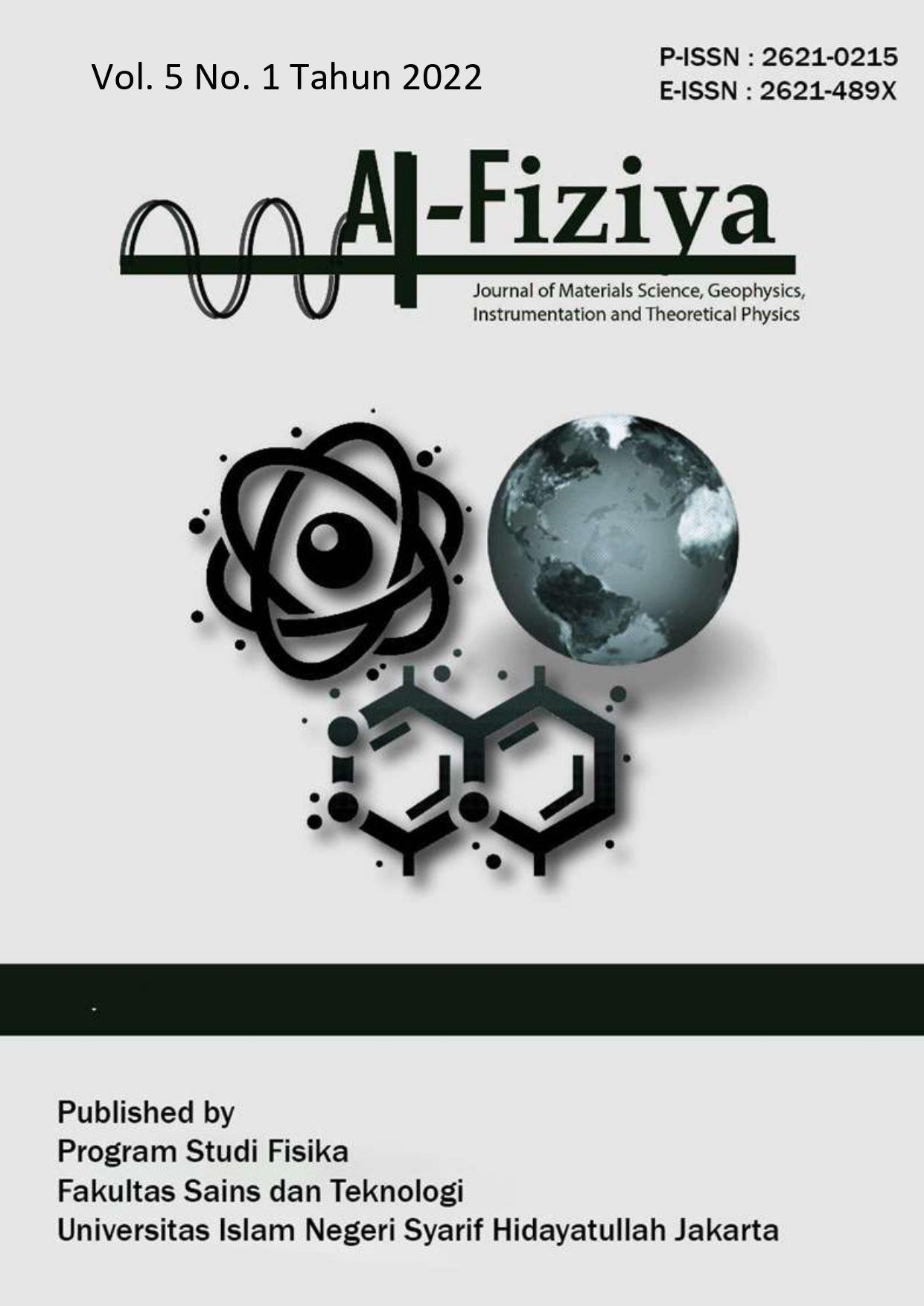Effect of Temperature and Heating Resistant Time on Wear Properties of Molybdenum/Alumina Composites
DOI:
https://doi.org/10.15408/fiziya.v5i2.24455Keywords:
wear properties, Mo/Al2O3 composite, temperature, heating holding timeAbstract
The wear properties of metals are very important in manufacturing. This is evidenced in the many studies that analyze the wear properties of a metal. This study uses Metal Matrix Composites, where the manufacturing process uses metal as the matrix and ceramics as reinforcement with powder metallurgy manufacturing methods. Where the powder of the two composite materials is compacted and heated at a certain temperature to form a solid composite material. The purpose of this study is to ensure that the mechanical properties of the Mo/Al2O3 composite are greater than that of the constituent material. In this study, molybdenum powder was used as a matrix material and alumina as a reinforcing material. Mo has excellent mechanical properties, namely hardness and excellent wear resistance. Al2O3 has excellent wear resistance properties. Research variables include heating temperature of 900, 1000, 1100°C and holding time of heating process for 0.5, 1, 1.5 hours with compaction pressure of 125 MPa and weight fraction of Mo by 80% and Al2O3 by 10%. Based on the test results, the highest sinter density was found at a sintering temperature of 1100oC and a sintering holding time of 1.5 hours at 6.831g/cm3. The value of porosity and wear rate is getting lower, namely 28.8% and the wear rate is 0.0012 mm/minute.References
U. A. Siagian, PENGARUH PENAMBAHAN MOLIBDENUM TERHADAP STRUKTUR DAN KETAHANAN OKSIDASI PADUAN FeCrAlSi. 2018.
S. E. E. Profile, “Multilayer Al2O3 / Mo composites,” no. February, 2020.
K. Suarsana, I. M. Astika, and L. Suprapto, “Pengaruh Penguat Hibrid SiCw / Al 2 o 3 Pada Komposit Aluminium Matrik Terhadap Sifat Konduktivitas Termal,” J. Ilm. Tek. DESAIN Mek., vol. 6, no. 1, pp. 147–151, 2017.
A. Alhamidi, S. Suryana, and S. Husein, “Sintesa dan Karakterisasi Material Ceramic Metal Composite (Ti1-xMox)C-NiCr melalui Proses Pemaduan Mekanik dengan Variasi Komposisi Molibdenum,” Tek. J. Sains dan Teknol., vol. 11, no. 1, p. 11, 2015, doi: 10.36055/tjst.v11i1.6968.
M. Terhadap, S. Mekanik, D. A. N. Struktur, M. Pada, B. Tahan, and K. Tipe, “Pengaruh penambahan unsur MOLIBDENUM (Mo) TERHADAP SIFAT MEKANIK DAN STRUKTUR MIKRO PADA BAJA TAHAN KARAT TIPE AISI 410,” vol. 2, no. 1, pp. 43–50, 2019.
J. Zygmuntowicz, A. Łukasiak, P. Piotrkiewicz, and W. Kaszuwara, “Al2o3-cu-mo hybrid composites: Fabrication, microstructure, properties,” Compos. Theory Pract., vol. 19, no. 2, pp. 43–49, 2019.
A. I. Nafili, S. M. B. Respati, and B. Santoso, “Pengaruh kandungan alumina terhadap kekasaran permukaan dan foto mikro permesinan pada komposit Al-Al2O3,” J. Tek. Mesin Indones., vol. 12, no. 2, p. 94, 2018, doi: 10.36289/jtmi.v12i2.79.
I. W. L. Suprapto, K. Suarsana, and N. Santhiarsa, “EFEK KOMPOSISI DAN PERLAKUAN SINTERING PADA KOMPOSIT Al/(SiCw+Al2O3) TERHADAP SIFAT FISIK DAN KEAUSAN,” J. Muara Sains, Teknol. Kedokt. dan Ilmu Kesehat., vol. 1, no. 1, pp. 124–131, 2017

